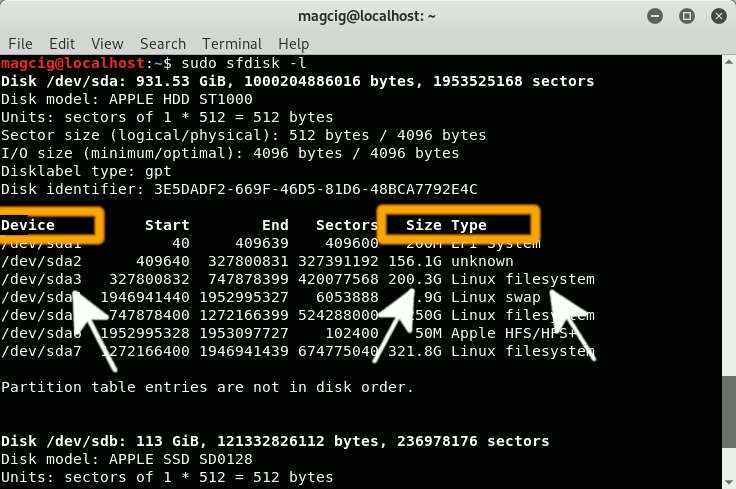Finding Target
-
2. Terminal Quick Start
How to Quick Start with Command Line on CentOS
-
3. Looking Up Partitions
Then to Find the Volume to Fix
Use the sfdisk Software like:sudo sfdisk -l
Then in output Look for the Linux filesystem, root or LVM Partitions.
You should Recognize each also watching to the Size:
-
4. Releasing Partitions
Next to possibly Unmount Volumes
Check if some Partition is Mounted with:df -h
Look into the Output if you are able to Realize the Marks.
Then if needed Unmount All the Linux Filesystem Partitions with:sudo umount /dev/[my-vol]
Where [my-vol] the Device identifier.
So for example to Unmount one do:sudo umount /dev/sda1
-
5. Fixing Disk
Then to Fix Hard Drive Volume
Automatically Fixing a Partition with:sudo /sbin/e2fsck -fy /dev/[my-vol]
So for instance:
sudo /sbin/e2fsck -fy /dev/sda1
Then if Errors are found Repeat again the process until the Disk is Fixed with No more Issue detected.
If the Disk is Not Corrupted then the Process will Easily Restore the Volume.Finally, Reboot CentOS 8
From Shell with:sudo reboot
Contents